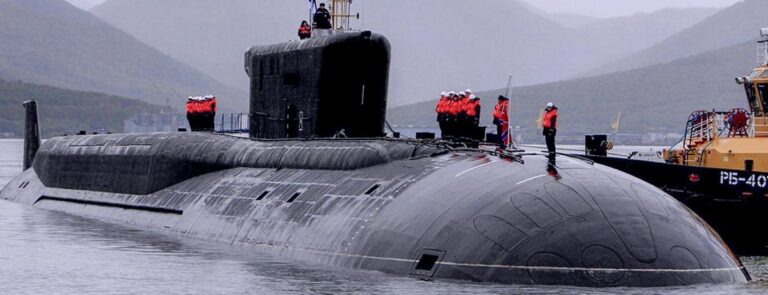In an unprecedented display of military cooperation, Russian and Chinese naval forces have embarked on their first-ever joint submarine patrol, signaling a deepening strategic partnership between the two nations. The operation, announced by defense officials from both countries, marks a significant development in their maritime collaboration amid shifting global power dynamics. This historic patrol not only underscores Beijing and Moscow’s intent to challenge established naval powers but also raises strategic questions about the future balance of security in key international waters.
Russian and Chinese Submarines Embark on Historic Joint Patrol in Strategic Waters
In an unprecedented display of naval cooperation, Russian and Chinese submarines have set off on a coordinated mission through some of the world’s most strategically sensitive maritime corridors. This joint patrol, lasting several weeks, signals a deepening alliance between the two powers amid rising global tensions and shifts in geopolitical dynamics. Both nations aim to showcase their naval capabilities, enhance operational interoperability, and send a strong message about their presence in contested waters.
The operation includes a versatile range of submarines, from stealthy diesel-electric types to advanced nuclear-powered vessels, each undertaking specific roles such as reconnaissance, surveillance, and deterrence. Key objectives of this complex mission include:
- Testing joint tactical maneuvers and communication protocols
- Mapping underwater topography and securing critical sea lines of communication
- Demonstrating force projection in areas near the South China Sea and Arctic routes
| Submarine Class | Country | Primary Role |
|---|---|---|
| Yasen-M (Project 885M) | Russia | Attack & Strategic Strikes |
| Type 094 (Jin-class) | China | Ballistic Missile Deterrence |
| Diesel-Electric Kilo-class | Russia | Coastal Defense & Surveillance |
| Type 039A (Yuan-class) | China | Conventional Attack |
Analyzing the Tactical Implications of the First Ever Russo-Chinese Underwater Collaboration
The unprecedented underwater patrol by Russian and Chinese submarines signals a bold step in maritime strategy, reflecting an intensified partnership designed to challenge Western naval dominance. This collaboration not only enhances tactical interoperability but also demonstrates a shared commitment to securing interests across the Asia-Pacific and Arctic corridors. Analysts emphasize that such joint maneuvers provide both nations with critical opportunities to refine communication protocols, test coordinated attack strategies, and project a unified deterrent posture beneath international waters.
Strategically, the patrol highlights several immediate implications:
- Enhanced Surveillance: Combined assets vastly improve undersea intelligence gathering, coastal monitoring, and early threat detection.
- Force Multiplication: Coordination between advanced diesel-electric and nuclear-powered submarines complicates adversaries’ anti-submarine warfare tactics.
- Geopolitical Messaging: The patrol serves as a tangible demonstration of Sino-Russian solidarity, challenging U.S. and NATO presence in contested regions.
| Aspect | Russian Submarine | Chinese Submarine | |||||||||
|---|---|---|---|---|---|---|---|---|---|---|---|
| Type | Nuclear-Powered Attack | Diesel-Electric | |||||||||
| Primary Role | Long-range strike, reconnaissance | Coastal defense, stealth infiltration | |||||||||
| Operational Depth | Recommendations for Global Maritime Security in Response to Increased Submarine Partnerships
In light of the unprecedented cooperative submarine deployment by Russia and China, international maritime authorities must prioritize enhanced surveillance and intelligence sharing to effectively monitor these joint operations. Establishing a multilateral maritime intelligence task force could prove vital in tracking submarine movements and intercepting potential threats before escalation. Heightened emphasis on real-time data exchange and cryptographic coordination would ensure quicker response times and greater situational awareness among allied navies. Moreover, investment in advanced underwater detection technologies like low-frequency active sonar and autonomous underwater drones should be accelerated across global maritime coalitions. Strengthening legal frameworks for freedom of navigation and clearly defining submarine conduct in contested waters will also reduce risks of inadvertent conflict. The table below summarizes key strategic actions recommended for navies facing this new era of submarine collaboration:
Final ThoughtsThe unprecedented joint patrol of Russian and Chinese submarines marks a significant development in the evolving dynamics of global maritime security. As both nations continue to expand their naval capabilities and assert their presence in strategically sensitive waters, this collaboration signals a deepening military partnership that may reshape regional power balances. Observers will be closely monitoring future joint operations and their implications for international security and diplomatic relations. |




